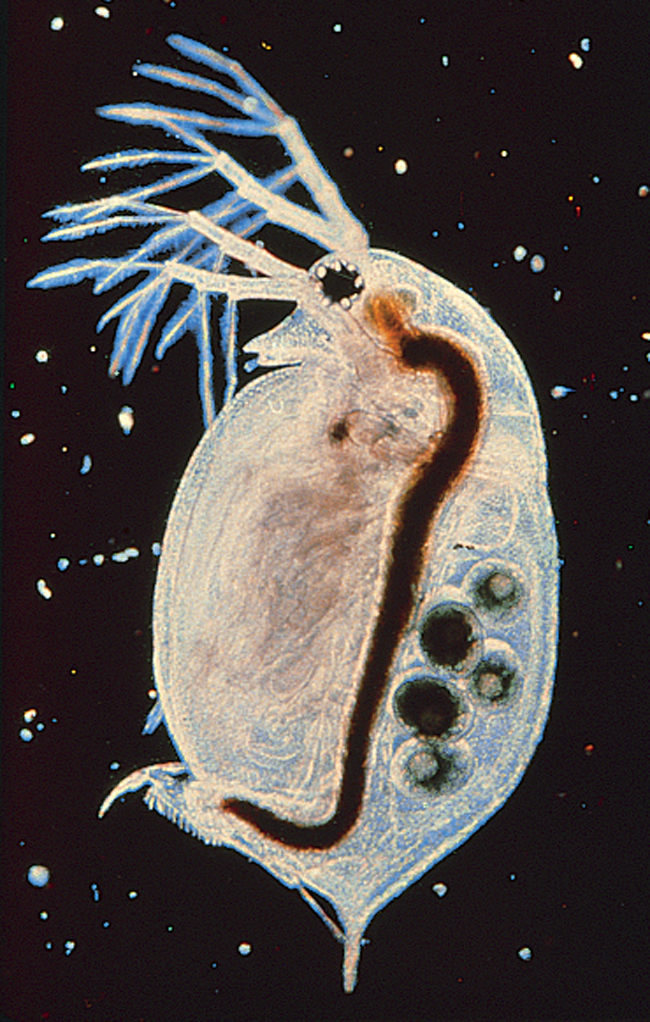Broads restoration programme
The Broads restoration programme aims to recreate clear water with healthy aquatic plant growth which provides a habitat for wildlife.

It includes the reduction of nutrients in the water which encourage algae to grow, making the lakes and rivers cloudy.
 In addition, water fleas like to graze on algae controlling its growth, but large populations of small fish keep the numbers of water fleas down by eating them. In order to resolve this, the fish need to be removed. This technique of stimulating the natural biological processes in a lake is called biomanipulation.
In addition, water fleas like to graze on algae controlling its growth, but large populations of small fish keep the numbers of water fleas down by eating them. In order to resolve this, the fish need to be removed. This technique of stimulating the natural biological processes in a lake is called biomanipulation.
Restoration requires a combination of complex techniques to re-establish clear water and submerged plant species in the longer term.
Broads restoration techniques
- Phosphorus control – removing the harmful nutrient phosphorous from treated sewage
- Suction dredging – removing nutrient-rich mud from the bottom of rivers and lakes like Barton Broad, the largest broad to have been dredged in this way
- Biomanipulation by removing the fish which eat water fleas, giving the water fleas a chance to graze algae and clear the water
- Reduction of nutrients from agricultural sources through environmentally sensitive farming practices Educating boat users about environmentally friendly boating.
The Lake Restoration Strategy
You can read in more detail about how we deliver the programme in the Lake Restoration Strategy which sets out the future direction for the restoration of the Broads. The accompanying Lake Restoration Strategy Action Plan outlines priority actions and details future projects to be delivered over the course of the five year programme.

